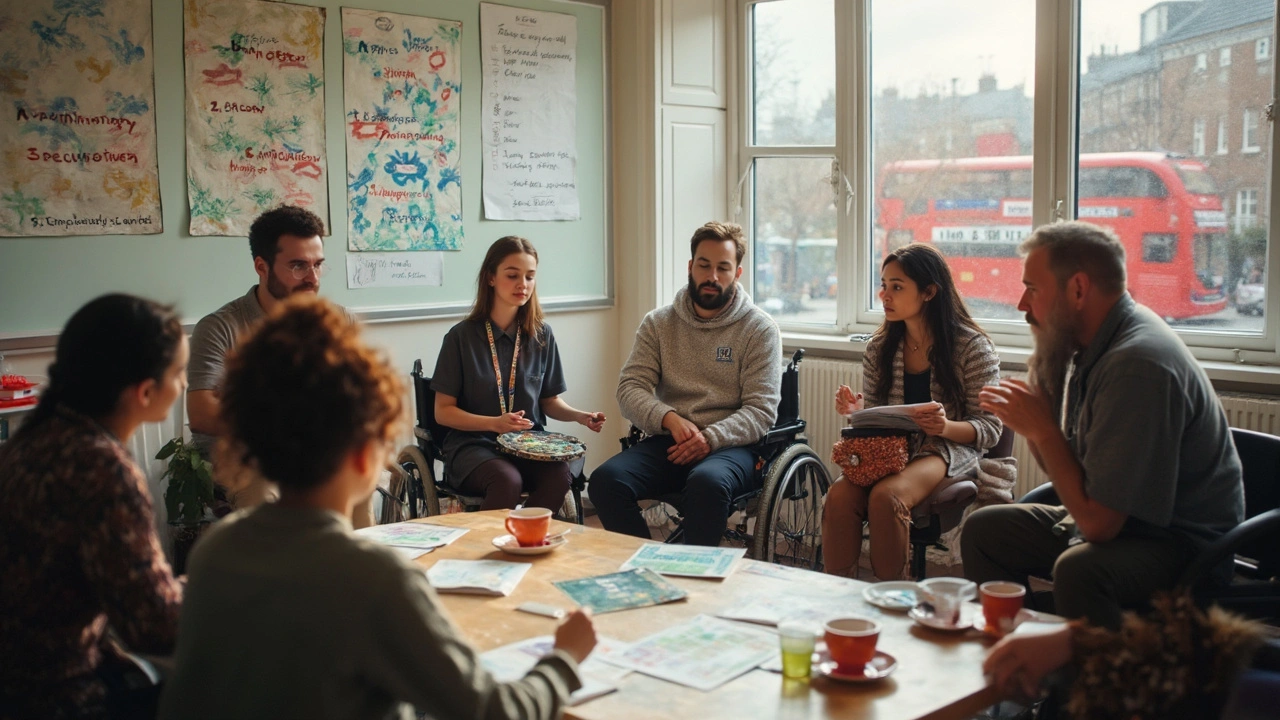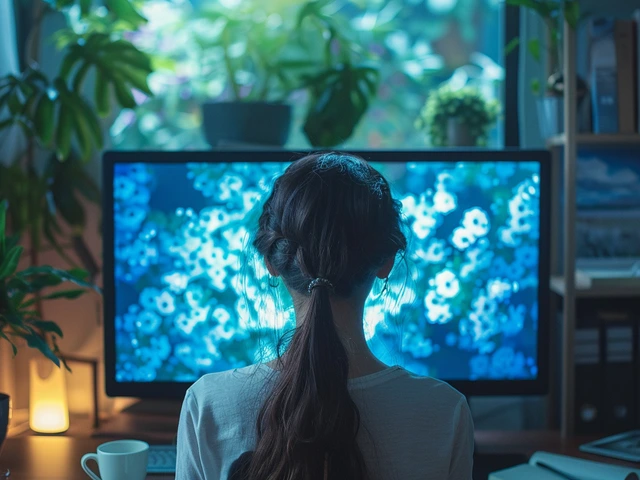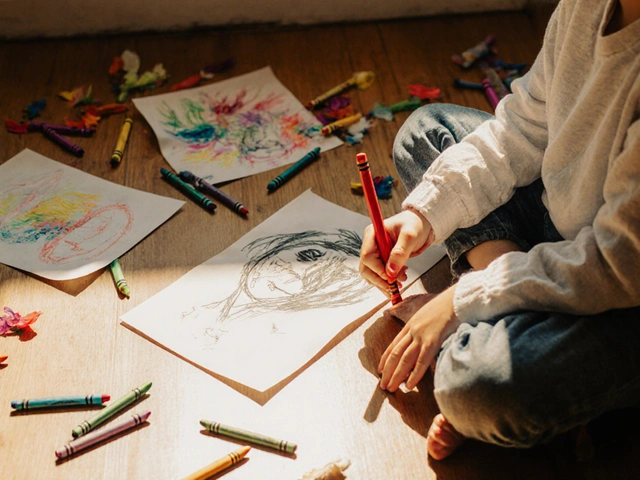You came here to find out if drawing, music, dance, drama, or writing can do more than just “feel nice.” The short answer: yes-when guided by trained therapists, the arts can reduce symptoms, build resilience, and enrich quality of life. Not as a magic fix, but as a solid, evidence-backed piece of a whole-person plan. I live in Adelaide and I’ve seen this land in real life-people who couldn’t find the words finding movement, people who felt numb finding colour again.
TL;DR:
- The arts can change how we feel, think, and connect. WHO and multiple meta-analyses back this up.
- They don’t replace medical care; they add the mind-body-social layer medicine often misses.
- Start simple: set a goal, choose a modality, find a credentialed therapist, and measure outcomes.
- Safety matters: some methods fit some conditions better than others.
- Access varies by region and funding; in Australia, NDIS and social prescribing may help.
Why Arts Therapies Belong in Holistic Health
Holistic health isn’t just blood tests and fitness trackers. It’s also meaning, connection, creativity, and nervous system regulation. That’s exactly where creative arts therapies sit. They use art-making-visual art, music, dance/movement, drama, and expressive writing-within a therapeutic framework to support mental, physical, and social health. This is guided by trained professionals (not just a free-for-all craft session), with goals tailored to you.
What does the evidence say? The World Health Organization’s landmark scoping review in 2019 synthesized over 900 publications and concluded the arts can help in prevention, treatment, and rehabilitation across the lifespan. Since then, more trials and meta-analyses have added weight, especially for depression, anxiety, trauma, pain, and chronic disease management. The signal isn’t about “curing” conditions; it’s about improving key outcomes that matter day-to-day-mood, sleep, pain perception, social engagement, and stress tolerance.
Here’s why these therapies work for whole-person health:
- They reach beyond words. Trauma, grief, or neurodivergent experiences aren’t always verbal. Art and movement can access those layers safely and gradually.
- They regulate the nervous system. Rhythm, breath, and repetitive motion can support calming pathways (think music’s tempo or dance’s pacing).
- They rebuild agency. Choosing colours, steps, or roles is active-not passive-care. That sense of choice carries over into daily life.
- They connect people. Group sessions lift isolation and strengthen support-the social “vitamin” many of us miss.
If you’re picturing paint-splattered canvases and nothing else, widen the frame. Music therapy might mean songwriting to process grief. Dance therapy could be gentle chair-based movement after surgery. Drama therapy may rebuild social confidence for teens. Expressive writing can help adults make sense of tough diagnoses. The common thread is purposeful creativity, guided and measured.
How to Start: A Step-by-Step Path from Interest to First Session
Here’s a practical path that works whether you’re new to therapy or adding this to an existing plan.
- Set one clear outcome. Pick something you can feel and measure. For example: “Reduce nightly pain from 7 to 5,” “Fall asleep 20 minutes faster,” “Have two non-avoidant social interactions a week,” or “Lower GAD-7 anxiety score by 3 points.”
- Choose the modality that matches your goal.
- Pain, stress, sleep: music therapy or gentle dance/movement.
- Trauma, grief, identity work: visual art therapy or drama therapy.
- Social skills, confidence: drama therapy or group music.
- Reflection and meaning-making: expressive writing or visual art.
- Screen for fit and safety. Consider any relevant factors:
- PTSD: start slow, avoid sensory overload; grounding first.
- Chronic pain or fatigue: low-intensity movement, pacing, energy budgeting.
- Psychosis: choose structured, predictable sessions; avoid overstimulation.
- Autism/ADHD: clear expectations, sensory-friendly options.
- Find a credentialed therapist. Look for recognised bodies: ANZACATA (arts therapy) in Australia/New Zealand; AMTA (music therapy); DTAA (dance/movement). Ask about training, clinical experience with your condition, and supervision.
- Agree on measures and timeframes. Use standardized tools (e.g., PHQ‑9 for depression, GAD‑7 for anxiety, pain scales), plus personal markers like “I join family dinner twice a week.” Reassess every 4-6 sessions.
- Decide format and frequency. Options include 1:1 weekly sessions, group programs, or blended (telehealth + in-person). In Australia, many private clinicians offer 50-60 minute sessions; group sessions may be 60-90 minutes.
- Plan the handoffs. Your arts therapist can communicate (with consent) with your GP, psychologist, physio, or care coordinator. Keep everyone aligned.
- Set a review point. After 6-8 sessions, look at the data and your lived feel: keep, tweak, or try a different modality.
Cost and access (Australia context): Private sessions often range from AUD $100-$180 for individuals and less for groups. Some private insurers may offer limited rebates. NDIS participants may be able to fund arts therapy if it meets plan goals and is delivered by a suitable provider. Social prescribing pilots run through some Primary Health Networks and community centres; your GP may know local options. If budget is tight, look for community programs run by hospitals, councils, or arts-in-health teams.
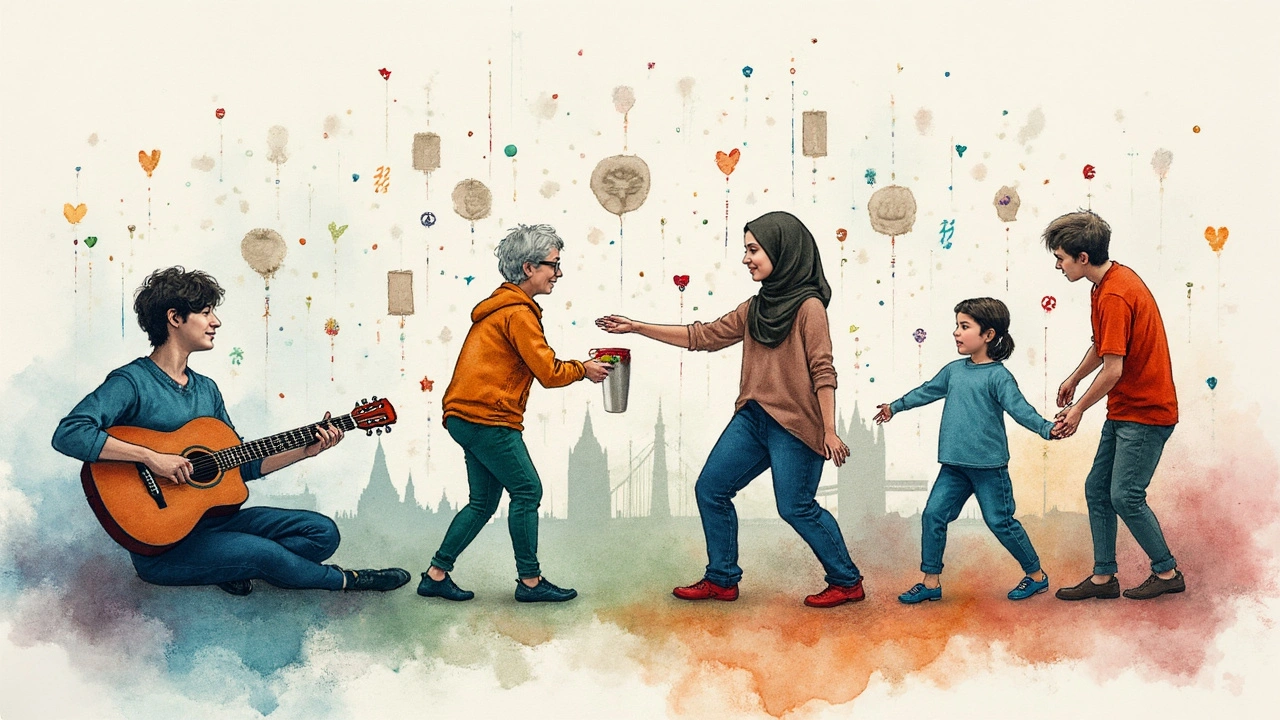
What It Looks Like: Real-World Scenarios and Modalities
Worried it won’t “fit” you? Here are snapshots that show how flexible and practical it can be.
- Music therapy for chronic pain (adult): You start with slow, steady rhythms and guided breathwork-sounds like a cross between meditation and music. Over time, you co-create a playlist that moves your mood from heaviness to lightness, then practice pacing your day with musical cues. Pain ratings drop a notch or two, but most importantly, your day feels less ruled by the pain.
- Art therapy for grief (teen): Words feel wrong after a loss. The therapist invites you to paint in shades you can’t name yet. A timeline collage helps piece together “before” and “after,” and a private “memory box” ritual gives you a place to visit when the waves hit.
- Dance/movement therapy after burnout (young professional): Movement starts in a chair with breath, then standing weight shifts-nothing performative. You track how your body signals “too much.” Over weeks, you reconnect with energy without tipping into overwhelm.
- Drama therapy for social anxiety (uni student): You role-play everyday tough moments-ordering coffee, asking a question in class-first as a “rehearsal,” then in the wild. You write your “script” for the week and come back with wins and rewrites.
- Expressive writing during cancer treatment (parent): Short prompts-10 minutes, three times a week-organise fear and hope into words. You keep a private log plus a letter to your future self after treatment. The writing steadies the storm.
These aren’t art classes. They’re structured, goal-based sessions where creativity is the tool, not the test. No one grades your drawing or your dancing.
Evidence You Can Use: Benefits, Limits, and Safety
Headlines are nice. Numbers are better. Here’s a compact read of what research often finds, with honest caveats.
| Modality | Common target | Evidence quality | Typical effect | Notes / sources |
|---|---|---|---|---|
| Music therapy | Depression, anxiety, pain | Multiple RCTs, meta-analyses | Small to moderate symptom reduction; improved QoL | Cochrane reviews (e.g., Aalbers et al. 2017 for depression); pain modulation studies |
| Dance/movement therapy | Depression, body image, stress | Growing RCT base; meta-analyses | Small to moderate improvements in mood and affect | Koch et al. meta-analyses; physiological arousal regulation findings |
| Art therapy (visual) | Trauma, cancer care, anxiety | Mixed but promising trials | Improved emotional processing, reduced distress; variable effect sizes | Hospital-based supportive care studies; trauma-informed protocols |
| Drama therapy / psychodrama | Social anxiety, PTSD, skill-building | Smaller RCTs, controlled studies | Moderate gains in social functioning; anxiety reduction | School/uni group programs; community mental health settings |
| Expressive writing | Stress, meaning-making, immune markers | Decades of studies; mixed clinical outcomes | Small but reliable stress relief; sometimes transient distress spike | Pennebaker tradition; short, low-cost adjunct |
What about safety? With a qualified therapist, adverse events are rare. The main risk is going too deep too fast, especially with trauma histories. Good practice uses consent, pacing, and grounding skills. If a session stirs strong emotions, clinicians step back, stabilize, and co-create a plan before moving on.
Who says this matters? Leading health bodies do. The WHO report captured it well:
“The arts can play a role in the prevention of ill health, promotion of health, and management and treatment of illness across the life-course.” - World Health Organization, 2019 scoping review
In Australia, interest in social prescribing and arts-in-health has grown through Primary Health Networks, hospitals, and community programs. Professional standards are shaped by bodies like ANZACATA (for arts therapy) and discipline-specific associations. While rebates vary, the clinical intent is the same as anywhere: safer expression, better regulation, real-life function.
Three rules of thumb to keep outcomes real:
- Pair subjective feel with objective measures. Mood scales plus “I returned to my Saturday sport.”
- Track dose. Most studies show clearer gains with weekly sessions for 6-12 weeks.
- Keep the circle tight. Permission-based updates between your therapist, GP, and any other clinicians create consistency.
Limits to know:
- Severe crises (e.g., active suicidality) need emergency and medical care first.
- Evidence is stronger for mood, anxiety, and quality of life than for curing specific diseases.
- Group fit matters. If you feel unsafe, advocate to adjust the setting, pace, or modality.
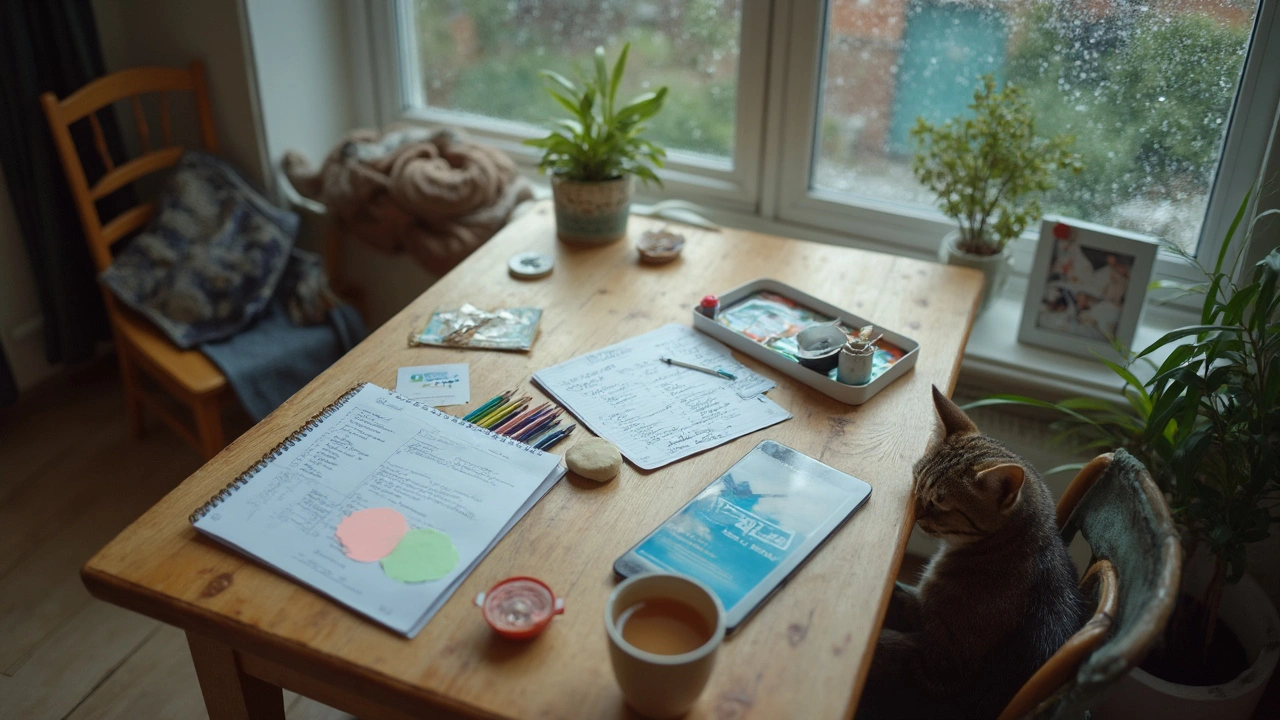
Tools, Checklist, FAQ, and Next Steps
Here’s the practical kit so you can act right away.
Quick-fit decision guide
- If you can’t find the words → try visual art or music.
- If your body feels stuck or wired → try dance/movement with pacing.
- If you’re rehearsing worries → try drama therapy to “rehearse” solutions.
- If time or budget is tight → start with expressive writing and short music-based relaxation, then scale up.
First-session checklist
- My main goal and how I’ll measure it (scale + life marker).
- My boundaries (topics/sensory inputs to avoid for now).
- Emergency or escalation plan if distress spikes.
- Consent about updates to my GP/psychologist/coach.
- Session logistics: frequency, length, fees, cancellation policy.
- Home practice plan (e.g., 10-minute prompt or playlist).
Progress self-audit (4-6 weeks)
- What changed that I can feel? What changed that I can measure?
- Do I need more or less structure? Different modality?
- Is the group/therapist a good fit for me?
- What’s one skill I can use outside sessions every day?
Mini‑FAQ
- Is this art class? No. You don’t need “talent.” It’s about process, not performance, guided by clinical goals.
- Can I do this online? Yes. Music and art therapy adapt well to telehealth; movement and drama can too with careful setup. In-person may be better for sensory or social goals.
- Will it replace my medication or CBT? Usually no. Think “and,” not “or.” Many people combine arts therapies with CBT, meds, physio, or mindfulness.
- What if I’m introverted? Start 1:1, set clear boundaries, and choose gentler modalities like visual art or writing.
- Is there evidence for pain? Yes. Studies show music and movement can lower perceived pain and distress and improve function, especially when combined with standard care.
- How do I know a therapist is qualified? Check membership with bodies like ANZACATA, AMTA, or DTAA, ask about supervision, and request a summary of their clinical approach.
- What about kids and teens? Arts therapies often engage young people better than talk therapy alone. Look for therapists experienced in child development and neurodiversity.
Next steps (choose your path)
- Individual: Write a one-line goal, shortlist a modality, and book two intake calls to compare fit.
- Parent: Ask your GP, school wellbeing team, or NDIS support coordinator for providers with child or adolescent experience.
- Clinician: Identify one local provider for referral trials; add a brief measure (e.g., PHQ‑9) pre/post 6 sessions.
- Manager/educator: Pilot a 6-8 week group with clear wellbeing metrics (attendance, burnout scores, qualitative feedback).
Troubleshooting
- I feel worse after sessions. Temporary spikes can happen as material surfaces. Ask for more grounding, shorter exposure, or a pause on trauma content. If distress persists, loop in your GP.
- I don’t connect with the therapist. Fit matters. It’s okay to switch. Request referral options and a summary of what you’ve tried to date.
- Budget is tight. Ask about groups, sliding scales, student clinics, or community programs. Consider brief home practice assigned by your therapist between sessions.
- No programs near me. Try telehealth and simple home-based practices: 10‑minute expressive writing, paced breathing to music, or a gentle movement routine.
If you want a simple place to start today: set a timer for ten minutes, pick one of these prompts, and notice what shifts:
- Music: Choose a 4-6 minute track with a calm rhythm. Sit or lie down and match your breath to the tempo. When thoughts wander, come back to the beat.
- Writing: “The thing I am not saying is…” Write without editing. Rip it up or keep it-your choice.
- Art: Draw your day as a weather map. Where are the storms, the clear skies, the fog? Label nothing.
- Movement: Stand and slowly shift weight from foot to foot while inhaling/exhaling in counts of 4. Stop if dizzy.
Holistic health isn’t about doing everything; it’s about choosing the few things that move the needle for your body, mind, and connections. The arts offer one of the most human ways to do that-grounded in evidence, shaped to fit you, and built to last.
